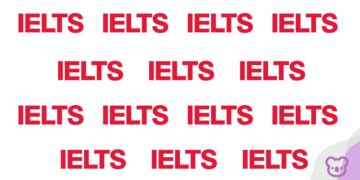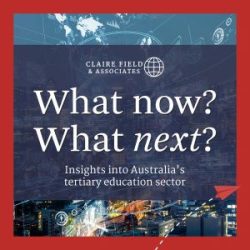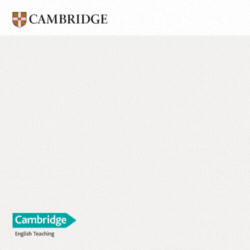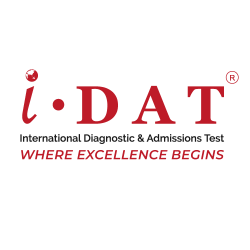In 2024, as part of the now doomed ESOS Amendment Bill, indicative allocations capping new international student enrolments were calculated for every provider and released in September. The New Overseas Student Commencements (NOSC), calculated by the Department of Education (DoE) for higher education providers and Department of Workplace Relations (DEWR) for vocational education and training providers, was met with an outcry across the sector.
Issues with the figures included providers being given NOSCs so low as to make them ridiculous (ie 1 or 2), allocations to providers that had no enrolments of international students for years, and providers that did not have CRICOS approval (Claire Field did some excellent analysis of this at the time, see here).
As we now know, the Coalition and Greens have stated that they will not support the passage of the Education Services for Overseas Students Amendment (Quality and Integrity) Bill 2024 through the Senate, and so it sits in purgatory as an adjournment on the Senate Notice Paper.
But the indicative allocations were not dead, there were to make a reappearance when Ministerial Direction 111 (TKN191224) was introduced by the Government in December last year: Priority 1 – High, processing will apply to Student visa applications associated with providers who have not yet reached their prioritisation threshold, which is 80 percent of their 2025 indicative allocation of NOSC in HE and VET.
When MD111 was announced in December, new NOSC allocation lists were released by the two agencies. The DoE website states that the list “reflects the initial methodology developed by the Department of Education and adjustments made following consultation with higher education providers”. The DEWR website has no such clarification.
Curious about what feedback had been taken on board, I compared the two lists in the analysis below.
Higher Education
There was movement in allocations between universities and their pathway providers between September and December. The pathway sector had unsuccessfully lobbied to be exempted from caps and no change was made to the exemptions under MD111. Instead, increases in pathway allocations for several providers have been offset with decreases in the allocation of the feeder university. The exception to this is Monash College, which had its allocation almost halved to the benefit of Monash University.
AIE Institute, which copped an allocation of zero has now received an allocation of ten. Some readers may remember that the CEO of the Academy of Interactive Entertainment, Dr John De Margheriti, appeared before the Senate Committee inquiry on the ESOS Amendment Bill and gave them a serve.
Among other things he said, “You’re meant to be serving the Australian people, but you’re not. The fact that we’re actually here having this discussion is a total shock to me. But I’m here. I’ve flown in from Italy. I cut down my holiday to be here to confront you and tell you to wake up and to not destroy our nation, because that’s what you’re about to do. This bill is wrong in every possible way”.
Another provider, Iona Trinity College, which didn’t appear on the September list but is CRICOS registered, has also been added. Other changes to the HE list appear to be a tidy up. For example, if a provider has an allocation of zero they no longer appear on the list.
Vocational Education and Training
Despite basically telling the Senate Committee at the time that there was nothing wrong with the data, there is a lot more movement in the VET lists.
DEWR must have read Field’s analysis and has now allocated zero to providers with no CRICOS registered VET courses, including dual sector universities.
Other changes, including concerns raised by Field at the time, that have seen allocations changed to zero include:
- Advance Australia International College, which advertises that it has a CRICOS Code but cannot be found on the CRICOS search website, was given an initial allocation of 182 that is now zero.
- Angel United Group has had its allocation of 101 reduced to zero, for reasons unknown to this author (it’s CRICOS registered and has enrolled VET students in previous years).
- Protesting at the time of “due process” for providers that were suspended and may have been appealing, at least one provider has now received zero.
- Providers that had not enrolled any VET students in recent history.
Looking at the opposite change, providers that had received zero allocation initially and now have an allocation:
- Nearly thirty providers have been given an allocation of 30 that did not appear on the initial list, some of these appear to have been just missed off the original list.
- Twenty of the providers were not on the initial list because they received RTO registration between September and November, and one in December. This raises two issues: (1) does Australia really need another 21 VET providers offering courses to international students, and (2) will these new providers be able to recruit anywhere near their allocation given they would not have been able to start recruiting until they received their CRICOS registration (noting that this will be a good thing for the Government’s aim of keeping enrolments low).
- A provider has received an allocation for a CRICOS provider code that does not appear on the CRICOS search website, although the provider has an allocation under another name and provider code.
- Western Sydney University Enterprises has received a new allocation despite not being CRICOS registered for any VET level courses.
Another change in the VET list is that DEWR has made the infinitely sensible decision to set a minimum allocation, which has been set at 20. However, the fact that DEWR’s minimum allocation is 20 and DoE’s is 10 provides another example of the disconnect between these two agencies when it comes to international education.
Although the change appears to advantage more than 250 providers, several of these are now offering courses that are in the exempt pilot-training category. TAFE providers also appear on the indicative allocation list in December despite also being exempted.
(Contributor side note: I have never been a fan of VET being in DEWR, especially when it comes to international education. But that’s a story for another day.)
If there’s a conclusion to be drawn from the analysis above, there are still some issues with how NOSCs are being allocated in the VET sector. This is a concern in the context of the upcoming election and the approach that the two main political parties may take to restricting international student enrolments.

















